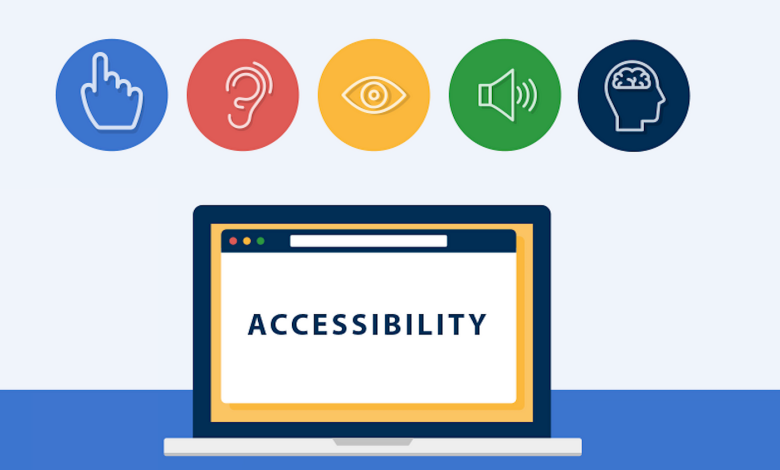Web Accessibility Standards: Building Inclusive Websites

The internet should be accessible to everyone, regardless of their physical abilities, cognitive skills, or technological limitations. Unfortunately, many websites still exclude users with disabilities.
Web accessibility ensures that digital products are usable by as many people as possible, including those with visual, auditory, motor, or cognitive impairments.
In this article, we’ll cover what web accessibility means, key standards, best practices, and tools to help you build inclusive websites that comply with global regulations.
1. What is Web Accessibility?
- Definition: Web accessibility refers to designing and developing websites so people with disabilities can perceive, understand, navigate, and interact with them.
- Goal: Create an inclusive digital environment where everyone has equal access to information and services.
Users Benefited:
- People with visual impairments (blindness, low vision, color blindness).
- People with hearing impairments.
- People with motor disabilities (difficulty using a mouse).
- People with cognitive or neurological disabilities.
2. Why Accessibility Matters
- Ethical Responsibility: The internet is a fundamental resource; exclusion is discrimination.
- Legal Compliance: Countries enforce accessibility laws (e.g., ADA in the US, EN 301 549 in the EU).
- Business Benefits: Accessible websites reach more users, improve SEO, and boost brand reputation.
- Better UX for All: Accessibility often leads to cleaner design and improved usability for everyone.
3. Web Content Accessibility Guidelines (WCAG)
The WCAG, developed by the W3C, is the international standard for accessibility. It’s based on four core principles:
- Perceivable – Information must be presentable to all senses (text alternatives, captions).
- Operable – Users must be able to navigate (keyboard support, enough time to read).
- Understandable – Information must be clear and predictable.
- Robust – Content must be compatible with assistive technologies (screen readers).
👉 WCAG levels:
- A (Basic): Minimum accessibility.
- AA (Recommended): Widely adopted, required by law in many regions.
- AAA (Optimal): Highest level, but harder to achieve.
4. Key Accessibility Practices
4.1 Alternative Text (Alt Text)
- Every image should have descriptive alt text.
- Example: Instead of “image1.png”, use “Person using a wheelchair entering an accessible building.”
4.2 Keyboard Navigation
- Users should be able to navigate without a mouse.
- Ensure proper focus states for buttons, links, and forms.
4.3 Color Contrast
- Text and background colors must meet minimum contrast ratios.
- Example: Black text on white background is better than light gray on white.
4.4 Captions & Transcripts
- Provide captions for videos and transcripts for audio content.
4.5 Semantic HTML
- Use headings (
<h1>,<h2>) logically. - Use lists, tables, and landmarks (
<nav>,<main>,<footer>) properly.
4.6 Forms & Labels
- Input fields must have associated labels.
- Provide clear error messages.
5. Accessibility Testing Tools
- WAVE: Browser extension for accessibility evaluation.
- axe DevTools: Automated accessibility testing.
- Lighthouse (Google Chrome): Includes accessibility audits.
- NVDA / JAWS: Screen readers for real-world testing.
6. Accessibility in Modern Frameworks
- React: Libraries like
react-ariaandreach-uiprovide accessible components. - Vue & Angular: Encourage semantic HTML and ARIA attributes.
- Design Systems: Material Design and Bootstrap offer accessible UI elements.
7. Common Mistakes Developers Make
- Relying only on color to convey meaning.
- Using vague link text like “click here”.
- Poor focus management in SPAs.
- Missing ARIA (Accessible Rich Internet Applications) attributes.
8. Accessibility Beyond Disabilities
- Users on slow internet connections benefit from lightweight designs.
- Mobile-first design improves accessibility for all.
- Voice assistants (Siri, Alexa, Google Assistant) rely on accessible content.
9. Legal Cases on Accessibility
- Domino’s Pizza (2019): Lost lawsuit for not having an accessible website.
- Target (2008): Paid $6 million settlement for inaccessible e-commerce site.
👉 These cases highlight that accessibility is not optional—it’s a legal requirement.
10. The Future of Accessibility
- AI-powered accessibility: Auto-generated captions, image descriptions.
- Personalized accessibility: Adjusting UI to individual needs.
- Stronger laws & enforcement worldwide.
Conclusion
Web accessibility is not just a technical requirement — it’s about building a fair and inclusive digital world. By following WCAG standards, implementing best practices, and testing thoroughly, developers can ensure their websites serve everyone equally.
Remember: Accessibility improves not just for users with disabilities, but for all users. An inclusive web is a better web.

